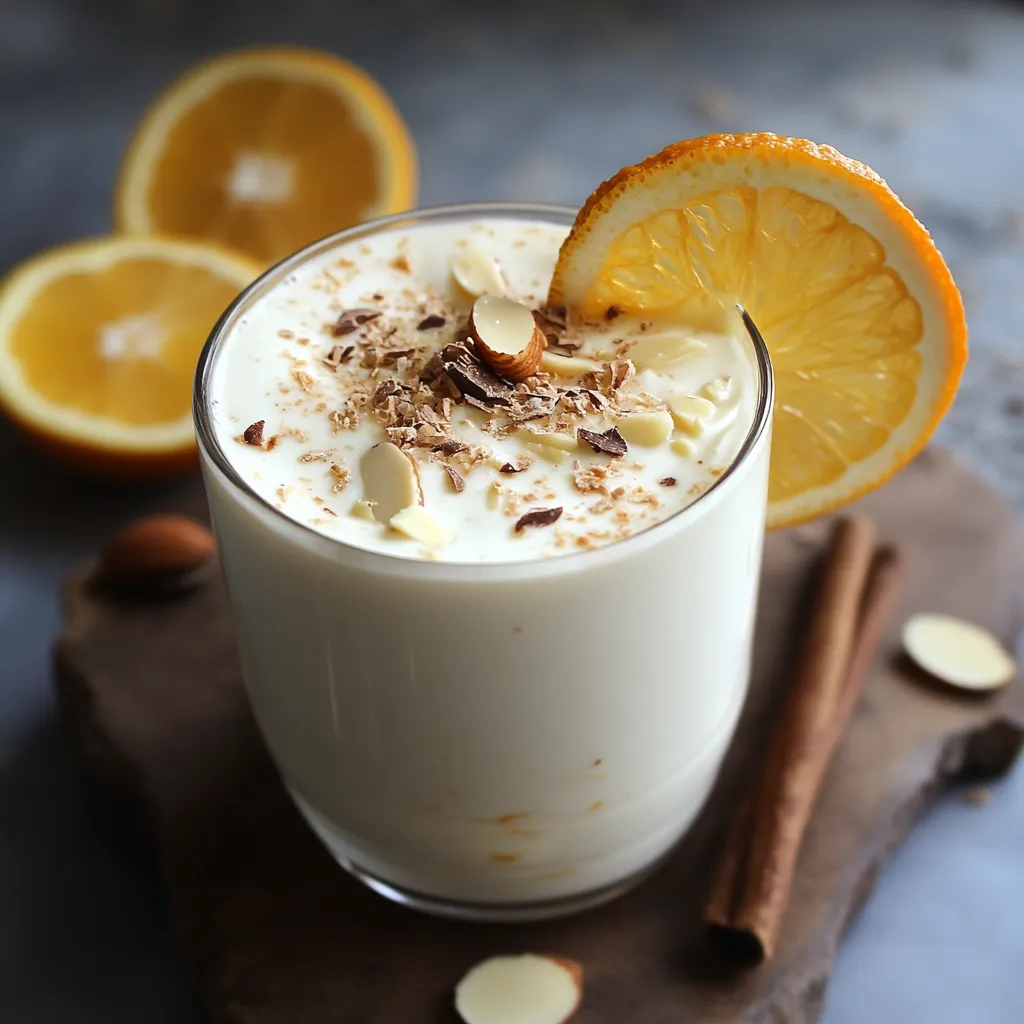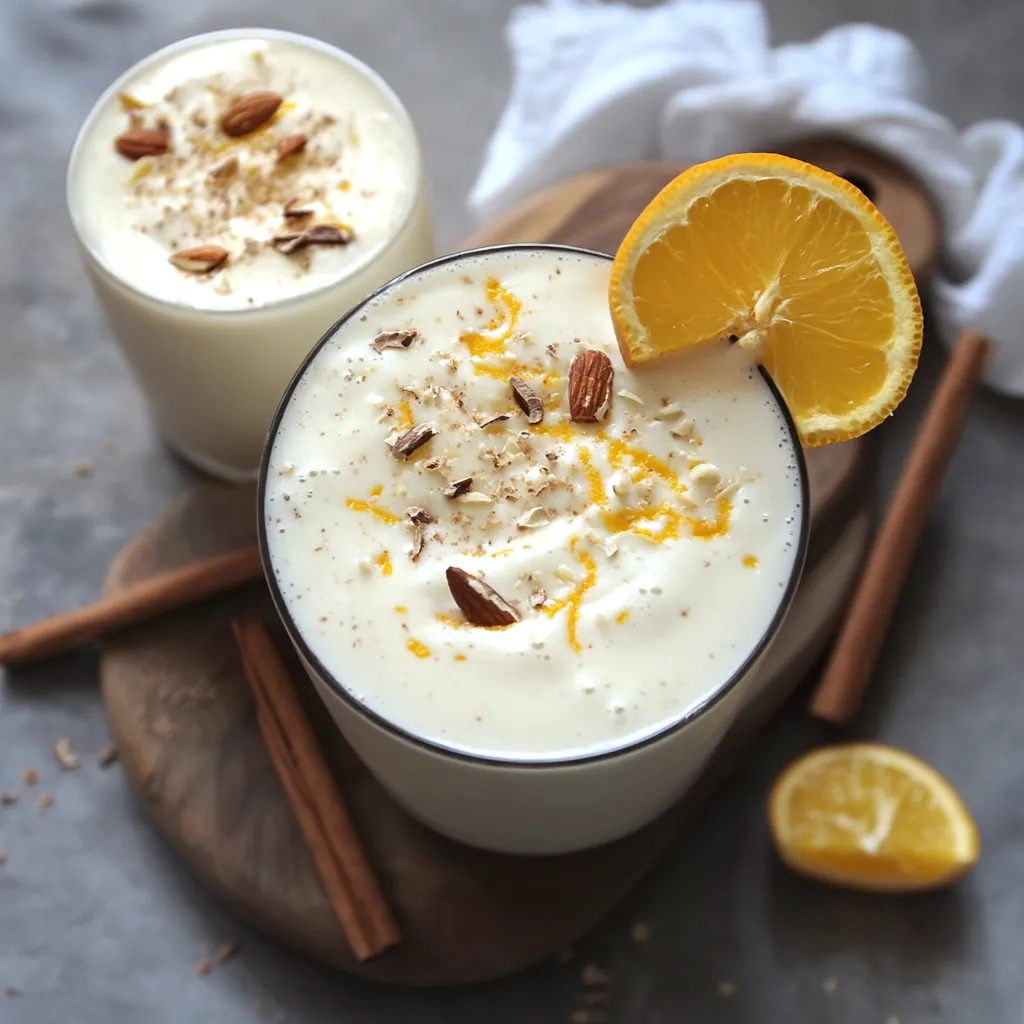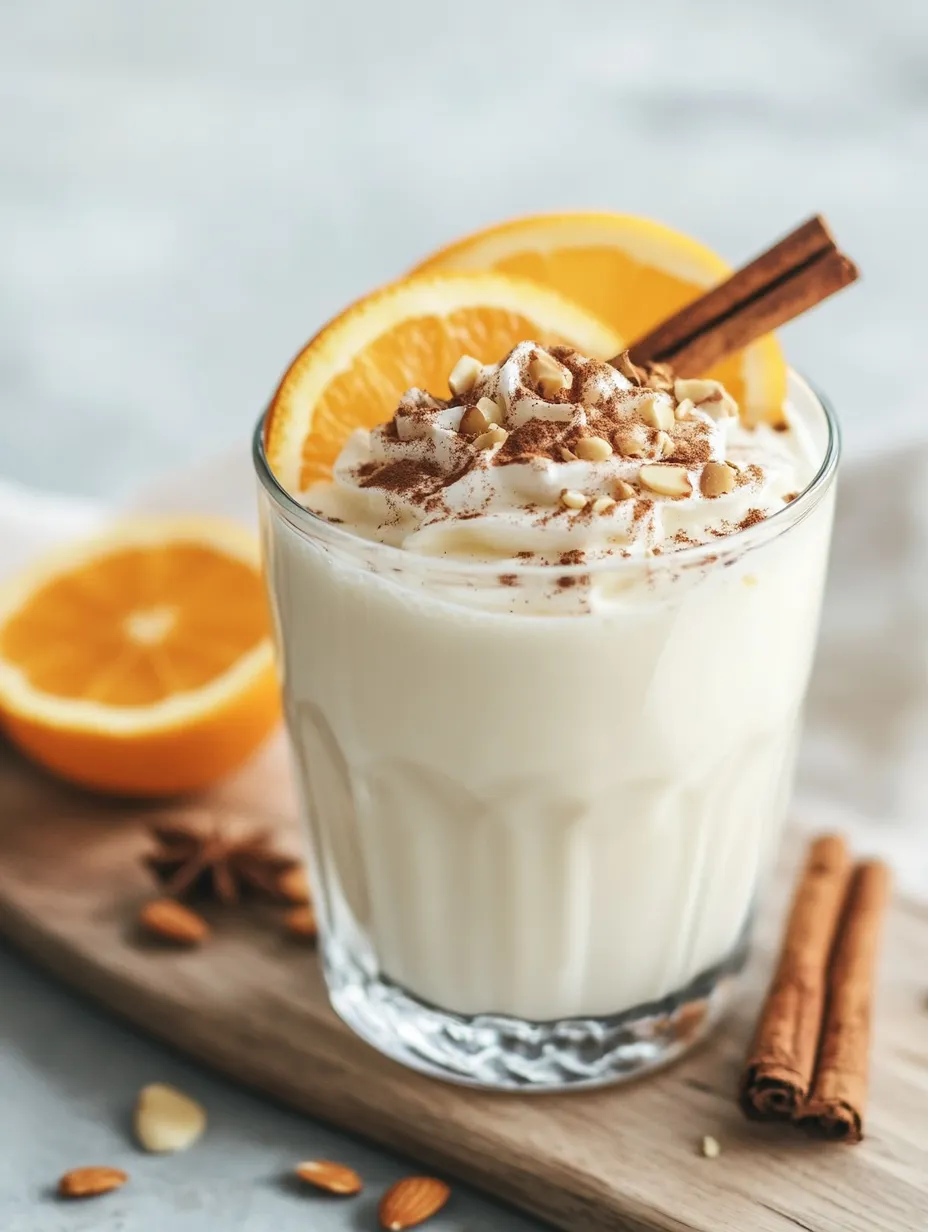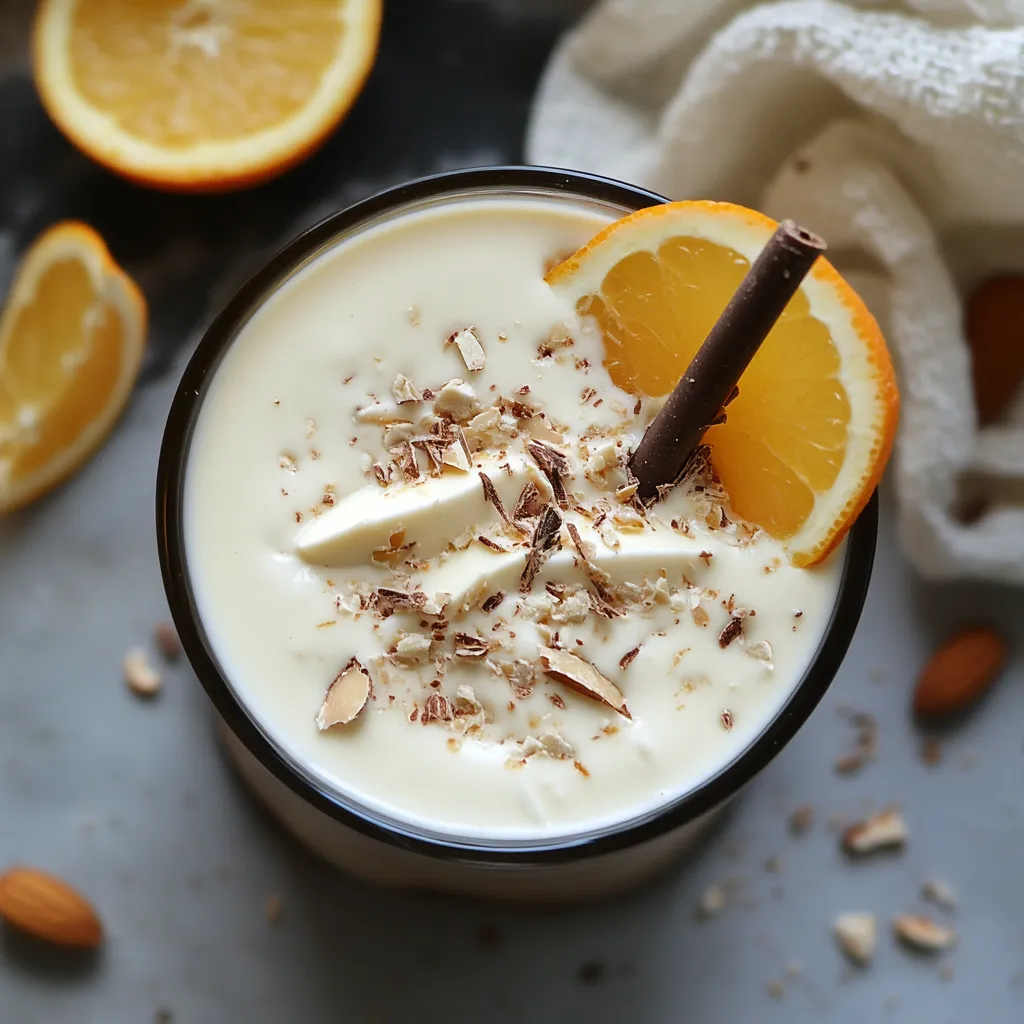 Pin it
Pin it
The blend of white chocolate and orange takes me back to winters from my younger days, though this upgraded hot cocoa transforms these familiar tastes into something truly special. Every mug tells a tale of meticulous methods and top-notch components, making a drink that's both snug and refined.
I made this for friends after dinner yesterday, and seeing their faces change from wonder to joy made all my testing worth it. The real trick comes down to good stuff and getting the method just right.
Key Ingredients and Shopping Advice
- White Chocolate: Pick only high-end couverture white chocolate containing at least 30% cocoa butter. Cheaper kinds won't make the smooth base we want
- Orange: Go for aromatic, untreated oranges. The natural oils in the peel really matter for taste
- Vanilla Bean: Whole beans offer richer flavor than bottled stuff. Try to find juicy, glossy pods
- Almond Paste: Real almond paste adds thickness and nutty flavor. Stay away from marzipan as it's way too sweet
 Pin it
Pin it
Perfecting the Chocolate Base
Start by cutting chocolate into small, same-sized bits no bigger than peas - this helps it melt evenly. Set up a double boiler with water just below a simmer, keeping the bowl well clear of the water. Warm chocolate gradually until it's barely melted, staying between 113-118°F. Mix in room-temp almond paste bit by bit, stirring until it's totally smooth.
 Pin it
Pin it
Flavor Steeping Method
Getting the cream right makes all the difference for taste. Warm it until tiny bubbles just start showing at the edge - never let it fully boil. Toss in orange zest, scraped vanilla seeds with the pod, and cinnamon. Cover and leave it for exactly 15 minutes. The warmth pulls out essential oils from the zest and vanilla, creating amazing smells and tastes.
Heat Management
Getting the mix right needs careful heat control. Your cream should be hot but not burning (around 180°F) when you mix it with chocolate. Pour through a fine strainer in three batches, stirring from middle to outside. This makes a stable mix that won't break apart.
Putting It All Together
When warming milk for serving, stop just before it boils - around 185°F. Stir in the chocolate base bit by bit while whisking. Using a stick blender makes tiny bubbles that give your drink its velvety feel. Pour with a swirling motion so cream naturally swirls on top.
 Pin it
Pin it
My Experience
I first found this flavor combo in a tiny Paris chocolate shop, where I tasted white chocolate and orange in a French hot chocolate drink. The chocolate maker there showed me that watching the heat isn't just about keeping chocolate from clumping - it's about keeping all the subtle flavors that make each sip special.
Heat Control Skills
Every heating step needs your attention. How hot things get when steeping affects flavor development - too hot ruins the brightness of citrus oils, too cool doesn't pull out enough flavor. Look for visual hints: tiny bubbles just at the edge of the pan show your cream is at the perfect temperature.
Changing with the Seasons
In winter, try using blood oranges for stunning color and rich flavor. Spring works well with Meyer lemons for brightness. Summer might call for fresh lavender, while fall brings warm spices like cardamom or star anise.
Keeping It Fresh
The chocolate base stays good when stored right. Put it in an airtight container, push plastic wrap right onto the surface, and keep in the fridge for up to ten days. Let it warm up a bit before using.
Beautiful Toppings
Make white chocolate curls from chocolate warmed to exactly 84°F. Sugared orange peel adds fancy flair and strong flavor. For special times, I sprinkle the top with edible gold, making it look super fancy.
Historical Background
Hot chocolate's journey from ancient Maya drink to European luxury shows how our relationship with chocolate has changed. This drink fits into today's craft chocolate world, where skill meets tradition. White chocolate, once looked down on by serious chocolate fans, now stands tall alongside dark types in fancy drinks.
How to Serve
Use warm cups - cold ones shock the chocolate and mess up the texture. Serve with orange-flavored cookies or toasted almonds on the side. For evening drinks, a small glass of Cointreau pairs really well.
Fixing Problems
If your chocolate mix separates, warm it gently while whisking, adding a few drops of warm cream. If it's too thick when serving, add warm milk a little at a time. Watch out for burned chocolate - once it's burnt, you can't fix it.
Best Tools for the Job
Your kitchen gear really matters for success. Use a heavy pot for even heating when steeping cream. Digital thermometers help you hit exact temperatures. A good stick blender creates the smoothest texture.
Plan-Ahead Tricks
Make big batches of the chocolate base for parties. Measure carefully to keep the right ratios. Store in small containers for quick use. Having this ready turns everyday moments into special treats.
Fancy Serving Ideas
Try coating your mugs with chocolate base before adding hot milk - this makes pretty swirl patterns. Practice pouring techniques to make designs like coffee art using the natural way cream and chocolate separate.
Fun Twists to Try
- Cozy Spice: Drop in a star anise and cardamom while steeping the cream
- Raspberry Twist: Swap some orange juice with raspberry puree
- Salty Sweet: Mix in a bit of caramel sauce and sea salt flakes
- Tropical Dream: Use coconut cream for some of the heavy
-
Closing Thoughts
Making truly great white chocolate orange hot cocoa means understanding how fat, sugar, and flavors work together. You've got to treat each part with care: chocolate melted slowly, cream steeped patiently, and flavors balanced just right. After trying countless versions, I've learned that success comes from how you do things and when you do them, not just what goes in the pot.
Frequently Asked Questions
- → Can I switch white chocolate chips for couverture?
- You can use chips in a pinch, but they won’t be as smooth since they have less cocoa butter and more additives. If you go with chips, adding a small spoon of unsalted butter can help mimic that silky texture. For the best taste and texture, stick to premium couverture chocolate.
- → What can replace almond paste for nut-free options?
- If you’re avoiding nuts, just skip the almond paste and add about 20% more white chocolate. Another option is tahini for a new flavor or even coconut cream for a tropical vibe. Keep in mind, sesame in tahini is also an allergen for some—check carefully.
- → How do I make this cocoa less heavy?
- If you prefer a lighter drink, mix in less ganache—try two tablespoons per cup of milk instead of more. You could also make the ganache with half-and-half instead of cream, or opt for 2% milk when preparing the drink. Dairy-free alternatives like almond or oat milk work too, though they’ll tweak the flavor.
- → Can vanilla extract replace the vanilla bean?
- Yes, one teaspoon of good vanilla extract will work. Add it once you’ve taken the cream off the heat. Vanilla beans offer more depth, but extract is a fine swap. You could also throw in a little bean paste (tiny bit) for some extra flavor and those elegant black flecks.
- → What if my ganache is too thick?
- If the ganache feels too firm, its chocolate-to-cream ratio may be off. Gradually whisk in extra warmed cream, a tablespoon at a time, while lightly reheating it on a double boiler. Keep going until it’s as smooth as warm honey.
- → How should I store leftover ganache?
- Seal it up in an airtight container and refrigerate for a week. Scoop what you need when ready, and reheat it with warm milk. For longer keeping, freeze portions in ice cube trays, pop them into a freezer bag, and they’ll last up to three months. Thaw in the fridge for best results.
-
